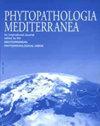Understanding the control strategies effective against the esca leaf stripe symptom: the edge hypothesis
IF 1.9
3区 农林科学
Q2 AGRONOMY
引用次数: 3
Abstract
A peculiar symptom that may develop in grapevines affected by wood pathogens involved in the esca complex of diseases is the leaf stripe symptom, which also gives the name to the Grapevine Leaf Stripe Disease. Multiple studies have revealed strong links between fungal presence, wood symptomatology and expression of the leaf stripe symptom. However, numerous other factors have been shown to play roles in symptom onset, incidence, severity and yearly fluctuation of this disease. While the factors triggering the leaf stripe symptom are still under investigation, three control strategies have been proven effective for substantially reducing its expression, namely trunk surgery, and applications of sodium arsenite or a fertilizer mixture. These control strategies are examined here, including their (putative or confirmed) modes of action, and how they may influence the leaf stripe symptom development. In this article, we also propose the ‘edge’ hypothesis to tentatively explain symptoms onset, keeping in consideration past knowledge and recent advances in the understanding of the esca leaf stripe symptom. Ultimately, it is our intention to offer food-for-thought and stimulate debate within the phytopathological community.了解对esca叶条症状有效的控制策略:边缘假设
葡萄藤中可能出现的一种特殊症状是叶条症状,这种症状可能受到与esca复杂疾病有关的木材病原体的影响,也就是葡萄叶条病的名字。多项研究揭示了真菌的存在、木材症状和叶条纹症状的表达之间的密切联系。然而,许多其他因素已被证明在这种疾病的症状发作、发病率、严重程度和年度波动中发挥作用。虽然引发叶条纹症状的因素仍在调查中,但有三种控制策略已被证明能有效降低其表达,即树干手术和施用亚砷酸钠或肥料混合物。本文研究了这些控制策略,包括它们的(假定的或已证实的)作用模式,以及它们如何影响叶条纹症状的发展。在这篇文章中,我们还提出了“边缘”假说来初步解释症状的发作,同时考虑到过去的知识和对esca叶条纹症状的理解的最新进展。最终,我们的意图是提供思考的食物,并在植物病理学界引发辩论。
本文章由计算机程序翻译,如有差异,请以英文原文为准。
求助全文
约1分钟内获得全文
求助全文
来源期刊

Phytopathologia Mediterranea
生物-植物科学
CiteScore
4.40
自引率
8.30%
发文量
28
审稿时长
6-12 weeks
期刊介绍:
Phytopathologia Mediterranea is an international journal edited by the Mediterranean Phytopathological Union. The journal’s mission is the promotion of plant health for Mediterranean crops, climate and regions, safe food production, and the transfer of new knowledge on plant diseases and their sustainable management.
The journal deals with all areas of plant pathology, including etiology, epidemiology, disease control, biochemical and physiological aspects, and utilization of molecular technologies. All types of plant pathogens are covered, including fungi, oomycetes, nematodes, protozoa, bacteria, phytoplasmas, viruses, and viroids. The journal also gives a special attention to research on mycotoxins, biological and integrated management of plant diseases, and the use of natural substances in disease and weed control. The journal focuses on pathology of Mediterranean crops grown throughout the world.
The Editorial Board of Phytopathologia Mediterranea has recently been reorganised, under two Editors-in-Chief and with an increased number of editors.
 求助内容:
求助内容: 应助结果提醒方式:
应助结果提醒方式:


